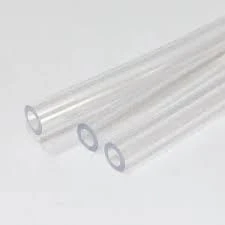ნოე . 06, 2024 07:47 Back to list
pe pipe fittings
Understanding PE Pipe Fittings An Overview
Polyethylene (PE) pipe fittings are an essential component of modern piping systems, widely utilized in various industries, including water distribution, gas supply, and sewage systems. These fittings are the connectors that join pipes, ensuring a seamless flow of liquids and gases while maintaining the integrity and efficiency of the entire system.
What is PE?
Polyethylene is a versatile thermoplastic that is known for its durability, flexibility, and resistance to chemicals. It comes in different grades, with high-density polyethylene (HDPE) and low-density polyethylene (LDPE) being the most common types used in piping. HDPE is renowned for its high tensile strength and rigidity, making it ideal for high-pressure applications, while LDPE offers increased flexibility for easier installation in tight spaces.
Types of PE Pipe Fittings
PE pipe fittings come in a variety of shapes and configurations, each designed for specific applications. Some of the most common types include
1. Elbows These are used to change the direction of the piping system, typically available in 45-degree and 90-degree angles.
2. Tees Tees allow for the branching of the pipeline, directing flow toward multiple outlets.
3. Reducers These fittings connect pipes of different diameters, allowing for seamless transitions between sizes while maintaining flow efficiency.
4. Couplings Used to connect two lengths of the same diameter pipe, couplings are essential for extending the length of piping systems.
pe pipe fittings

5. Caps and Plugs Caps are used to close off the ends of pipes, while plugs perform a similar function, often providing a tighter seal.
Advantages of PE Pipe Fittings
PE pipe fittings offer numerous advantages over traditional materials. Their lightweight nature makes installation easier, reducing labor costs and time. Additionally, polyethylene's corrosion resistance means that these fittings will not rust or deteriorate over time, ensuring a longer service life.
Moreover, PE fittings can withstand a wide range of temperatures and pressures, making them suitable for both underground and above-ground applications. The smooth interior surface of PE fittings minimizes friction loss, contributing to efficient flow rates.
Sustainability and Environmental Impact
One of the significant benefits of using PE pipe fittings is their environmental impact. Polyethylene is recyclable, helping to reduce plastic waste. Additionally, PE pipes are often associated with lower energy usage for transportation and installation, further contributing to their sustainability profile.
Installation and Maintenance
Installing PE pipe fittings requires specialized equipment and techniques to ensure proper joining methods, such as heat fusion or electrofusion. While maintenance is generally minimal due to the durability of the material, regular inspections are essential to identify potential issues before they escalate.
Conclusion
In conclusion, PE pipe fittings play a vital role in the efficiency and effectiveness of piping systems across various sectors. Their exceptional properties, such as durability, flexibility, and resistance to corrosive elements, make them an increasingly popular choice in infrastructure development. With a focus on sustainability and long-term performance, PE pipe fittings are likely to remain a key component of modern piping solutions for years to come.
-
25mm PVC Irrigation Pipe - Durable & Efficient Watering Solution for Farms & Gardens
NewsJul.05,2025
-
HDPE Culvert Pipe Supplier – Durable, Leak-Proof & Easy Installation Solutions
NewsJul.05,2025
-
High Transparency PVC Clear Sheet Super Transparency PVC Sheets & HDPE Cutting Board Supplier
NewsJul.04,2025
-
High-Quality PVC-M Pipe Supplier Trusted PVC Pipe Company & 75mm PVC Connection Pipe Solutions
NewsJul.04,2025
-
PVC Transparent Sheet Roll - Durable & Flexible PVC Plastic Sheet Roll for Industrial & Home Use
NewsJun.24,2025
-
High-Quality PVC PPR Pipes and Fittings Durable ERA PPR Solutions
NewsJun.10,2025

